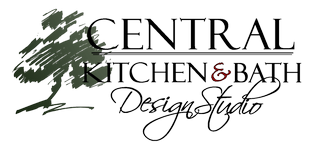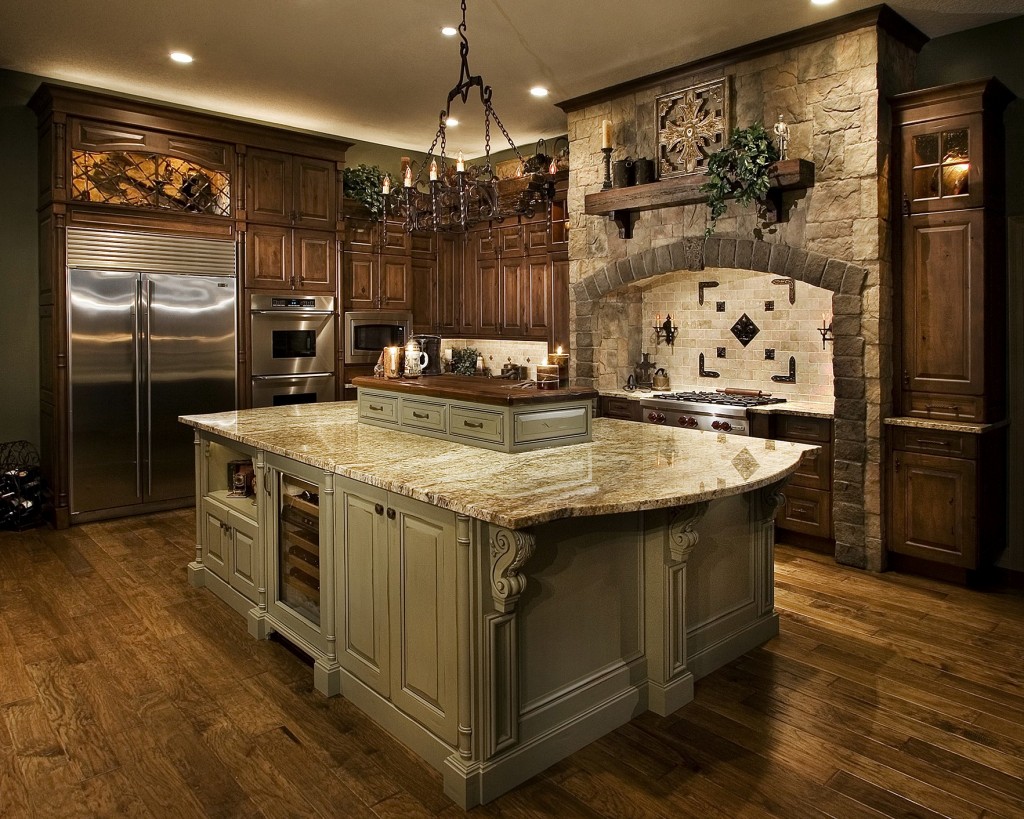A Guide 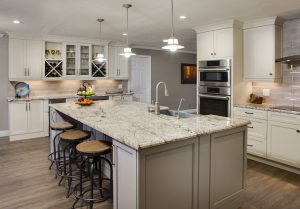 to Cabinet Terminology
to Cabinet Terminology
Kitchen design often begins with cabinet selection. The options are nearly unlimited. From wood species, to paints and stains, your kitchen designer can help you sort through it all. Some of the terminology can be confusing. Here’s a guide to some of most popular cabinet terminology.
Cabinet Construction:
Framed Cabinets
Framed cabinets have what are called rails and stiles that form the frame at the front of the cabinet box. Commonly referred to as the “face” frame, it is built as part of the cabinet box and the door is attached to the frame giving the cabinet extra strength and dimension. Common door types found on framed cabinets include standard, full overlay, partial overlay and inset. (See below for more on this)
Frameless Cabinets
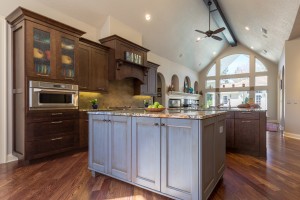
Frameless cabinet construction, while popular among those seeking simple, more contemporary cabinet designs, it can be used to create designs from contemporary to traditional. This construction eliminates the cabinet face frame, and a stronger box is used to achieve necessary stability. With frameless cabinets, only full overlay doors can be used with hinges attached directly to the sides of the cabinet box. This is often referred to as “European Style” due to the fact that that is where it originated. Some also call this style “Full Access” because it eliminates the wasted space that you have with framed cabinets. When space is a premium, we recommend frameless cabinets, because they provide the maximum amount of storage space and easy access.
Cabinet Door Types
Overlay Cabinet Doors
Overlay refers to how much of the cabinet door covers the (face) frame. Cabinet doors come in full or partial overlay versions.
Full overlay doors cover the entire cabinet box and create a nearly seamless and streamlined look, similar to a frameless style. 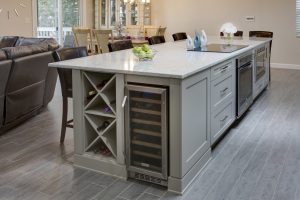 Double doors when used with full overlay style can provide even more flexibility because they do not require a vertical face frame stile between the two doors. We often recommend this approach when our clients need to store larger items such as serving platters and cookware.
Double doors when used with full overlay style can provide even more flexibility because they do not require a vertical face frame stile between the two doors. We often recommend this approach when our clients need to store larger items such as serving platters and cookware.
Partial overlay doors cover part of the cabinet frame, with a small portion of the face frame still showing, providing a more traditional cabinet look. The doors and drawers of a partial overlay cabinet often overlap the cabinet box evenly around the opening of each cabinet but will very based on the Partial Overlay chosen. This type of cabinetry door style is one of the most traditional and common, and it is also typically a cost-effective style. (Think less door/less cost)
Inset Cabinet Doors
Inset cabinet doors fit inside the cabinet face frame openings, making the door flush with the front of the cabinet instead of on the top of the cabinet box. Decorative hinges can used to fit the door precisely into the frame opening. We sometimes recommend inset cabinet design for larger kitchens as inset cabinets offer less usable interior space with the door sitting inside the frame. The clean lines and elegant look of inset cabinets more than compensate for the loss of a little interior space.
Panel Types
Recessed Panel Cabinet Doors
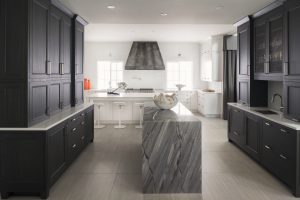 Recessed panel cabinet doors have a center panel that is lower than the rest of the door and a higher outer edge. Sometimes referred to as a Flat Panel. We often specify recessed panel doors for more modern designs. The outer part of the door is can be the same style that is used with a raised panel.
Recessed panel cabinet doors have a center panel that is lower than the rest of the door and a higher outer edge. Sometimes referred to as a Flat Panel. We often specify recessed panel doors for more modern designs. The outer part of the door is can be the same style that is used with a raised panel.
Note: Some doors will only work with a recessed panel.
Raised Panel Cabinet Doors.
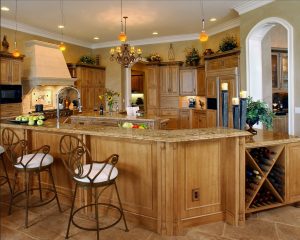
Raised panel cabinet doors are mainly used for more traditional styles. They have a center panel that is raised from the rest of the door and often feature a edge treatment that gives it a specific style.
Cabinet Styles
Transitional design is characterized by clean lines that add depth and interest without being visually overpowering. The most basic design is the Shaker style a five-piece door with a recessed (flat) center panel and no additional edge detailing.
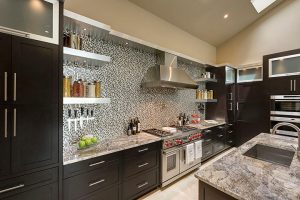
Contemporary design is known for having slab doors that do not have panels, molding or detailing to produce a clean minimalist look. These doors can be any finish from stain wood to high gloss acrylic.
Traditional design often have raised panel doors and can include arched doors on the wall cabinets that have a curve at the top that is either recessed or raised within the door panel.
Cathedral arch doors a more pronounced arch at the top. Beaded cabinets feature decorative wood paneling with vertical grooves on the interior panel. Glass inset cabinets refers to the center panel of the door and often feature a clear or frosted piece of glass that allows you to see the contents of the cabinet. Of course, most any kind of glass can be used.
This is not meant to be an inclusive list but a starting point on some of the terms used in the cabinet industry. If you would like to learn more, contact us at info@centralkitchen.com
 Paul Greenspan is a 30+ year Veteran of the Kitchen and Bath industry and has been published in a number of local and national magazines. He has taken leadership roles with the National Kitchen & Bath Association, Bath & Kitchen Buying Group, and others. He is currently the General Manager for Central Kitchen and Bath in Winter Park Florida. If you would like more information on Kitchen or Bath remodeling check out his website: www.centralkitchen.com or call 407-629-9366
Paul Greenspan is a 30+ year Veteran of the Kitchen and Bath industry and has been published in a number of local and national magazines. He has taken leadership roles with the National Kitchen & Bath Association, Bath & Kitchen Buying Group, and others. He is currently the General Manager for Central Kitchen and Bath in Winter Park Florida. If you would like more information on Kitchen or Bath remodeling check out his website: www.centralkitchen.com or call 407-629-9366
